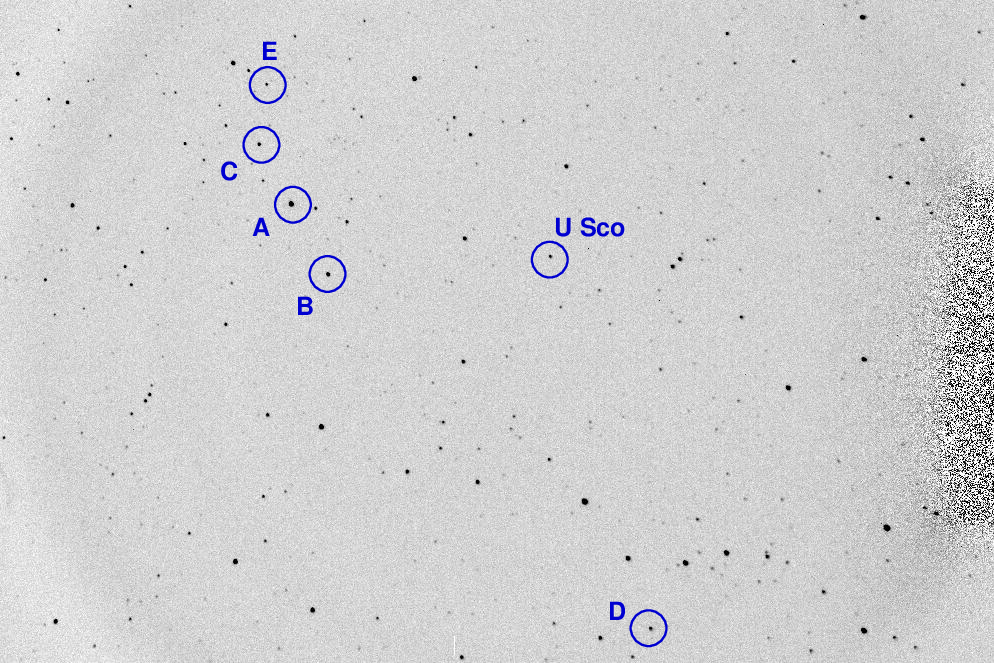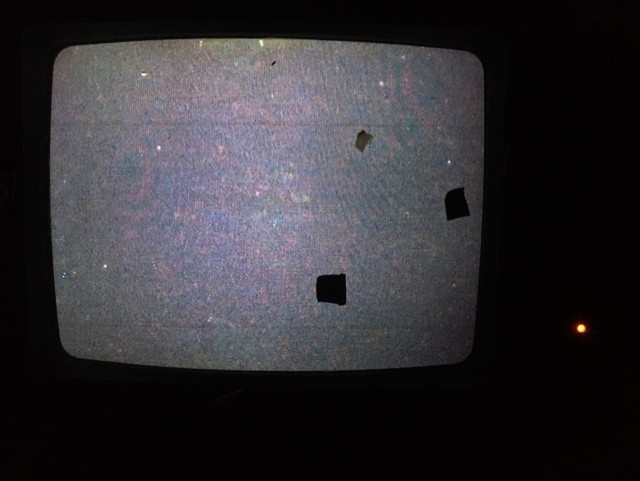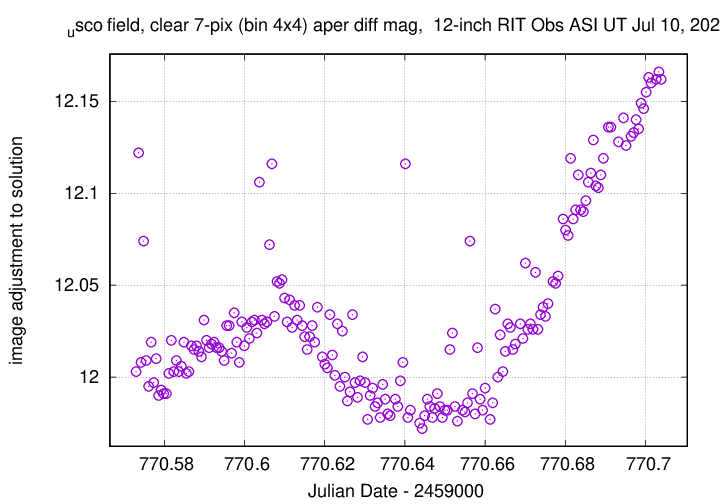
On the night of Jul 09/10, 2022, under mediocre (no clouds, but nearby moon glare) conditions, I acquired images of the outbursting cataclysmic variable star U Sco.
Due to the nearby gibbous Moon, the measurements of U Sco have a larger-than-usual scatter: about 0.12 mag at best. Yuck. The target has also faded to about V = 16.
U Sco is a cataclysmic variable which only rarely is caught in an outburst. This one was first noticed at UT 2022 June 6.720 by Masayuki Moriyama. The star reached a peak brightness of about V = 8, but faded quite a bit by this evening; it is currently about V = 16.
The main setup was:
Notes from the night:
The object is located at
RA = 16:22:30.78 Dec = -17:52:42.8 (J2000)
A chart of the field is shown below. The size of the chart is about 42 x 30 arcminutes.

I've marked the location of several comparison stars as well, which appear on the AAVSO chart of comparison stars.
I'll use star "A" to shift my instrumental magnitudes to the V-band scale.
I took a photo of the finder TV's screen when pointing to this target; this could be a useful reference for the future:

The sky value shows no clouds, but changes in sky due to motion of the dome letting moonlight in (or not).

The FWHM graph below shows a small change, reduced by the re-focusing.

Using aperture photometry with a radius of 7 pixels in clear filter (binned 4x4, each pixel is 1.052 arcsec, so a radius of 7.4 arcsec), I measured the instrumental magnitudes of a number of reference stars and the target. Following the procedures outlined by Kent Honeycutt's article on inhomogeneous ensemble photometry, I used all stars available in each image to define a reference frame, and measured each star against this frame.
Sigma-vs-mag plots show that the floor was about 0.008 mag after discarding a dozen particularly bad images; but since the moonlight's glare sometimes fell right on the target, its uncertainty is larger than one would otherwise expect.

The change in zeropoint shows one episode of very minor clouds.

The measurements show what _might_ be a small decline.

You can download my measurements below. A copy of the header of the file is shown to explain the format.
# Measurements of U_Sco made at RIT Obs, UT 2022 Jul 10, # in mediocre conditions, # by Michael Richmond, # using Meade 12-inch LX200 and ASI 6200MM. # Exposures 45 seconds long, clear filter. # Tabulated times are midexposure (FITS header time - half exposure length) # and accurate only to +/- 1 second (??). # 'mag' is a differential magnitude based on ensemble photometry # using a circular aperture of radius 7 pix = 7.4 arcseconds. # which has been shifted so AAVSO 000-BBX-431 has mag=10.707 # which is its V-band magnitude according to AAVSO. # # UT_day JD HJD mag uncert Jul10.07611 2459770.57611 2459770.58055 15.600 0.116 Jul10.07800 2459770.57800 2459770.58244 15.707 0.120 Jul10.07862 2459770.57862 2459770.58306 15.624 0.118
Last modified 7/10/2022 by MWR.